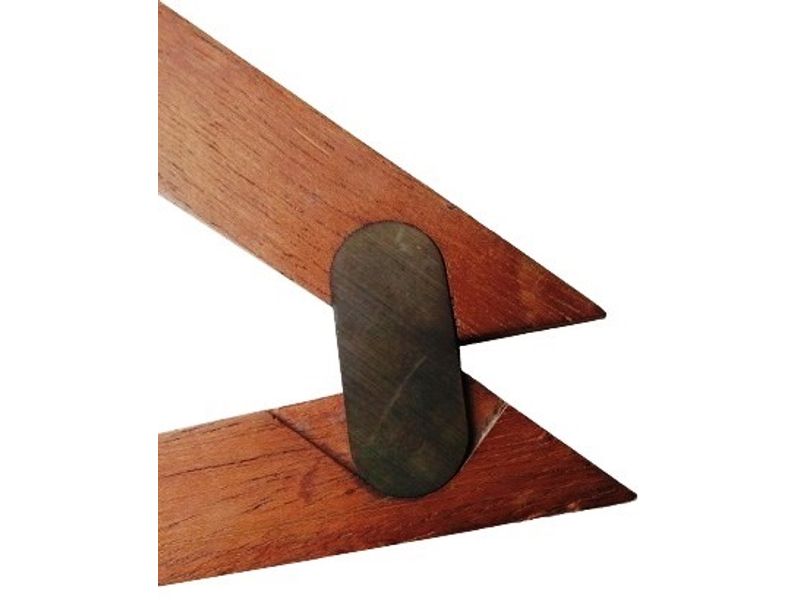Description
Harrison’s patent clinograph in mahogany with brass hinge (c.1900).
The Clinograph (Harrison’s Patent) is a set-square with a swivelling blade, used in conjunction with a T- square, for drawing lines parallel, perpendicular, or symmetrically inclined to any given line or direction.
With one edge of the instrument resting against the edge of the T-square, the blade can be instantly set to the required position, and the friction of the joint is sufficient to hold it firmly while in use.
For drawing parallel lines it is slid along the T-square to any part of the drawing paper. For perpendicular or symmetrical lines, after being set, it is turned with its other edge against the T- square, or with its other face on the paper, as the case may be, after which it is slid into any position as before.
Since one edge always rests against the T- square, the discomfort attending the ordinary methods of drawing inclined lines is avoided, and such work is greatly facilitated, whilst at the same time greater accuracy is secured.
(Ref: Walmisley A.T. Field Work and Instruments. D Fourdrinier, London. 1900.)






